Milde interessante Datenauswertung, die zeigt, wie sich in den Jahren von 1973 bis 2024 die verschiedensten Medien verändert haben, über die wir alle Musik hören und dafür bezahlen.
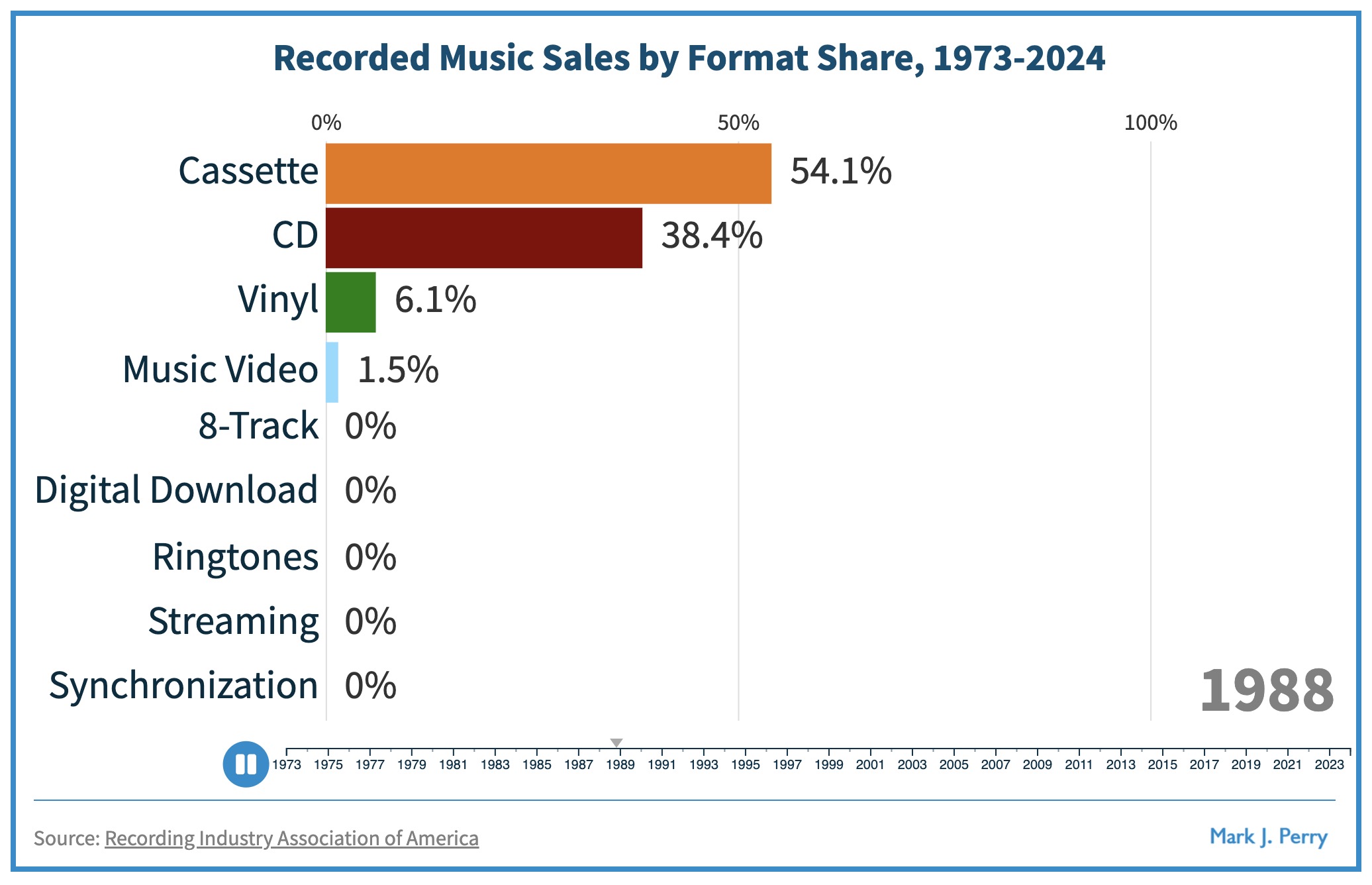
(via Book of Joe)
Milde interessante Datenauswertung, die zeigt, wie sich in den Jahren von 1973 bis 2024 die verschiedensten Medien verändert haben, über die wir alle Musik hören und dafür bezahlen.

(via Book of Joe)
Kleine milde interessante Sprachspielerei: European word translator. Leider weniger umfangreich als von mir erwartet.
Enter one or two lower-case English words to see translations from Google Translate.
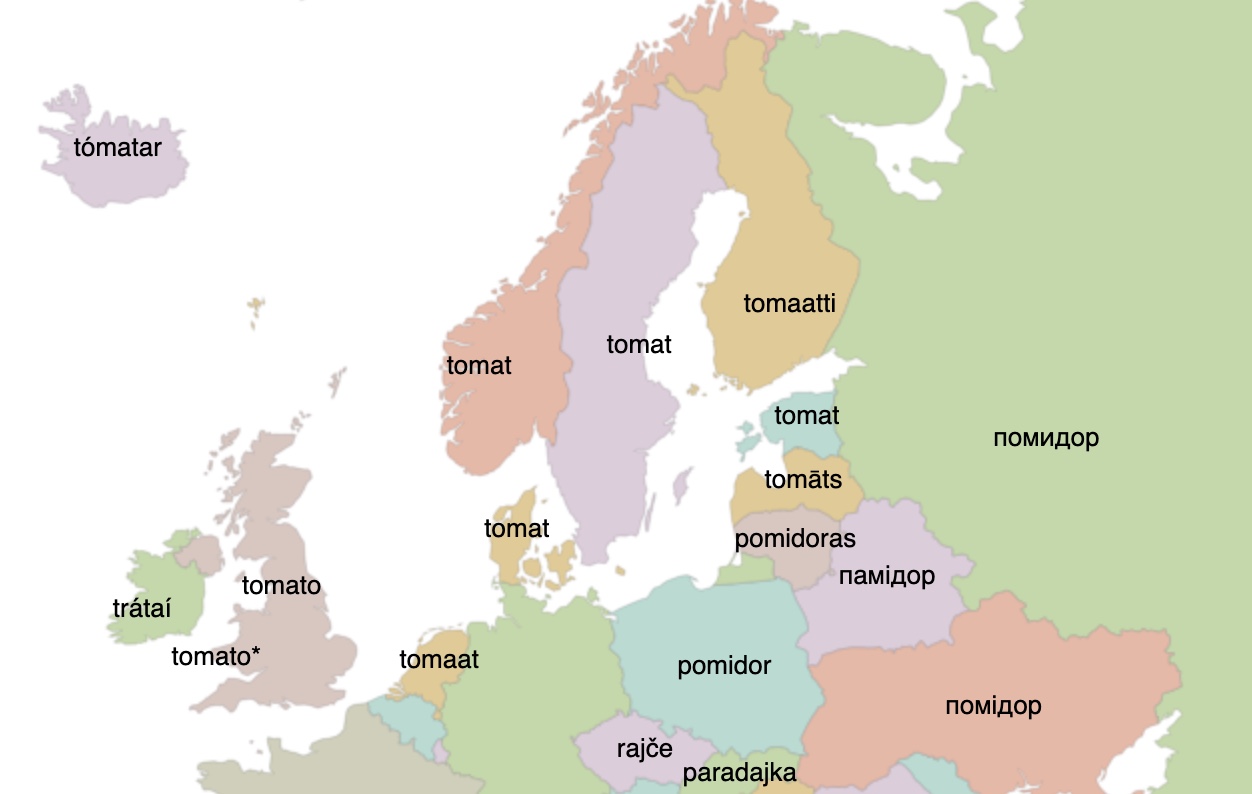
(via Book of Joe)
Irgendwie uselesss, aber ich ich habe trotzdem mal kurz geklickt. Um mal zu gucken, sie wissen schon. MapCanvas macht aus allen erdenklichen Orten zu minimalistische Kartenporträts. Auch von der für mich schönsten Stadt der Welt, natürlich.

(via BoingBoing)
Milde interessant: Aman Vir hat eine interaktive Karte diverser Inseln erstellt, die wahrscheinlich die Wenigsten auf dem Schirm haben. So wie die Fasaneninsel zwischen Spanien und Frankreich, die alle sechs Monate den Besitzer wechsl
Pheasant Island ist eine unbewohnte Flussinsel mitten im Fluss Bidasoa und wird gemeinsam von Spanien und Frankreich kontrolliert, wobei beide Länder alle sechs Monate abwechselnd die administrative Kontrolle über die Insel haben. Damit ist Pheasant Island das kleinste Kondominium der Welt, ein politischer Begriff, der ein Gebiet bezeichnet, das von zwei Ländern gemeinsam kontrolliert wird. Obwohl die Insel bei Ebbe manchmal von der spanischen Seite aus zu Fuß erreicht werden kann, ist der Zugang verboten.
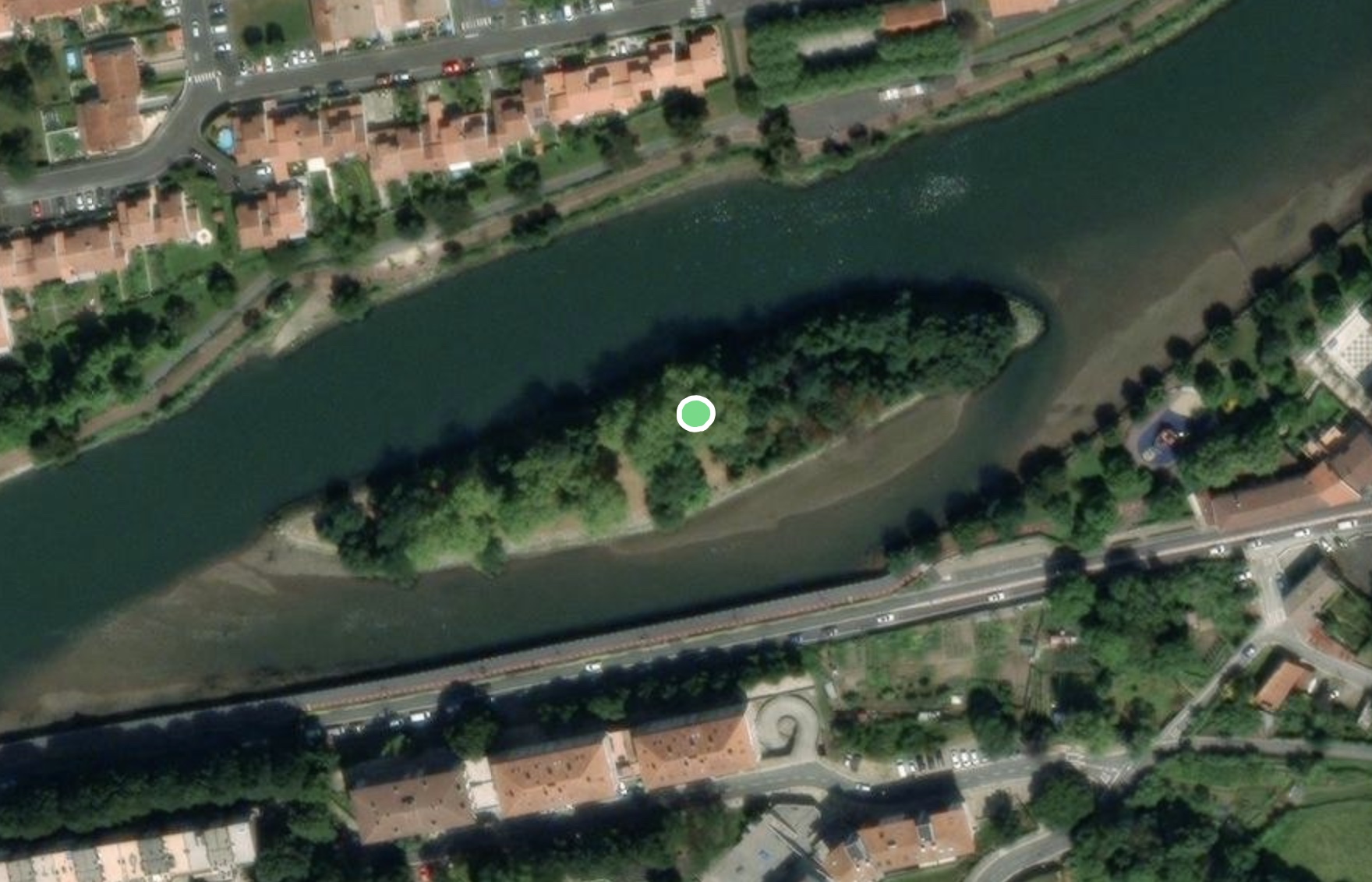
(via BoingBoing)
Interessante Kartendarstellung von Earth Impact Database, die uns 200 der größten Meteoritenkrater auf dem Erdball zeigt.
A nice example of a crater 2-3 km wide is Rotor Kamm in southern Africa. I should mention that we’re easily into city killer impacts here, in case you’re wondering.
Eine animierte Zeitleiste von Data Is Beautiful zeigt die Trends, auf welche Weise Paare sich von 1930 bis 2024 zum ersten Mal trafen und kennen gelernt haben. Basierend auf einer landesweit repräsentativen Umfrage unter amerikanischen Erwachsenen. Das Internet als größter Verkuppler aller Zeiten und offenbar deutlich mehr als nur Tinder und Co.
The historical methods of meeting through family, church, neighborhood, and primary or secondary school have all been declining sharply since 1940. The rapid rise of couples meeting online corresponds with the introduction of the World Wide Web after 1995 and the adoption of smartphones after 2007.
The core of the data is based on a paper from Stanford University’s Social Science Data and Software Social Science Data Collection.
Nur eine Seite, die etliche Statistiken rund um das Alltagsleben in Echzeit darstellt. Da geht er dahin, der Tag.

(via Book of Joe)
Neulich erst die durch Daten-Lecks bekannt gewordenen häufigsten Passwörter, jetzt durch Daten-Lecks ersichtlich: die gängigsten PIN-Nummern.
According to the analysis, just 20 4-digit numbers account for 27% of all PINs: 1234, 0000, 7777, 2000, 2222, 9999, 5555, 1122, 8888, 2001, 1111, 1212, 1004, 4444, 6969 (nice), 3333, 6666, 1313, 4321, 1010. The diagonal line is people using repeated pairs of digits (e.g. 2727 or 8888) while the horizontal line near the bottom is people who are presumably using their (19xx) birth year as a PIN. (You can see the beginning of a 20xx line on the left side.)
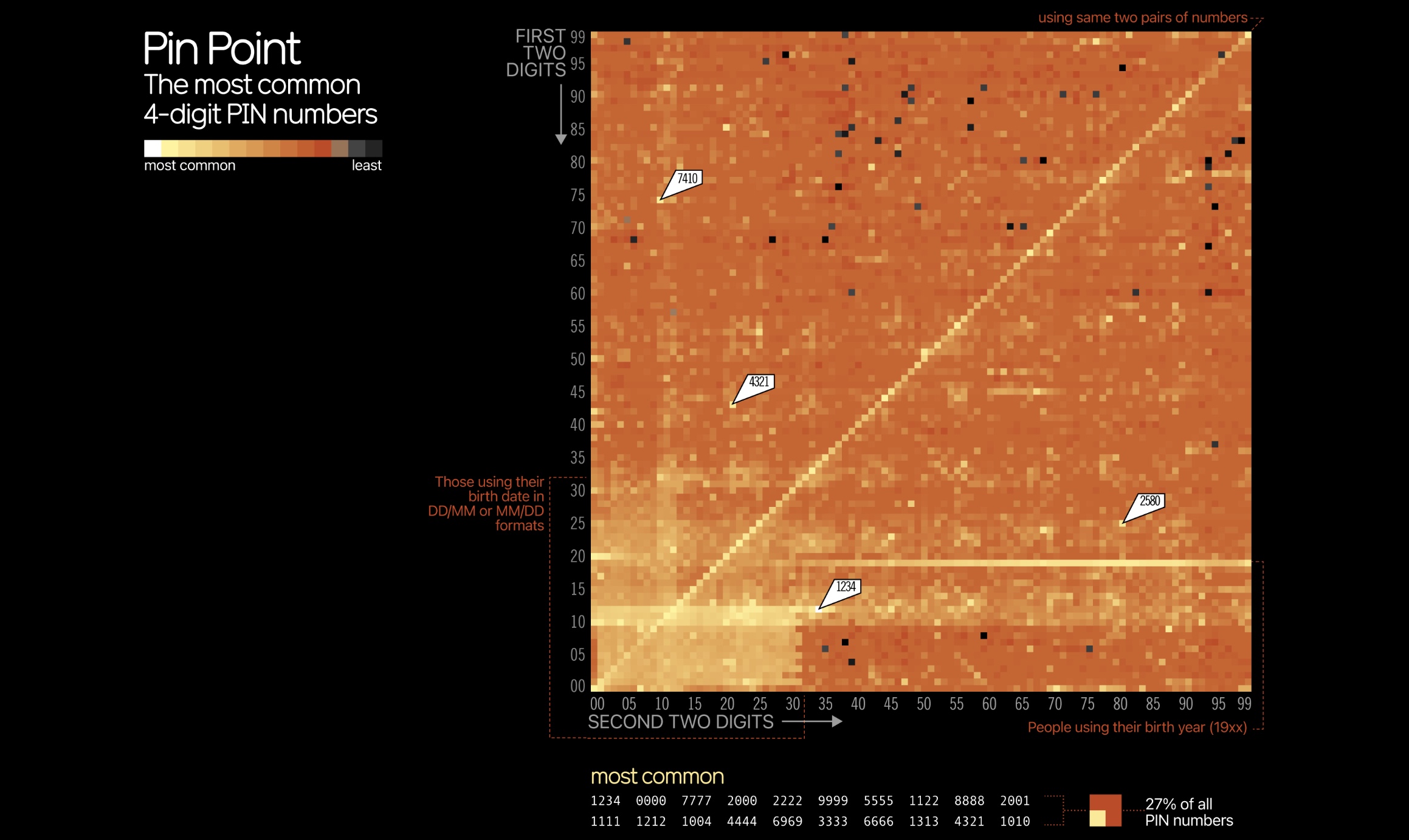
(via Kottke)
David McCandless hat für Information is beautiful aus verschiedenen Daten-Lecks die 500 am meisten benutzten Passwörter zusammengesammelt und in einer Cloud visualisiert. Wenn eures dabei sein sollte, dann vielleicht doch mal ändern.
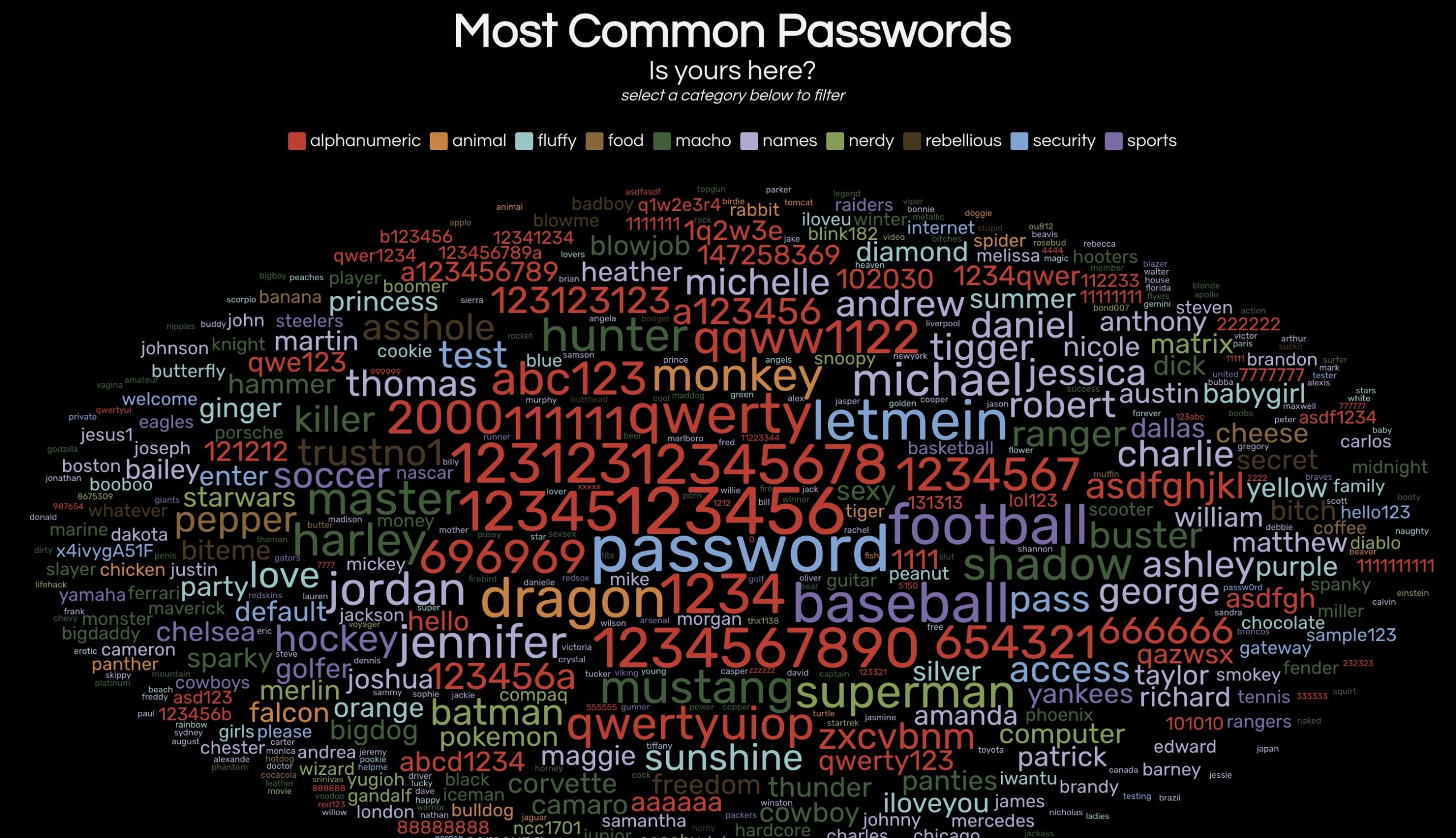
(via Book of Joe)
Milde interessant: Sunken Ships of the Second World War ist eine Weltkarte, die Schiffe sammelt, welche im zweiten Weltkrieg versunken sind.
About the Sunken Ships of the Second World War
This dashboard maps out the locations of more than 15,227 ships that were sunk during the Second World War as a result of self-inflicted or enemy action (i.e. not included are ships sunk as a result of natural disasters or accidents). Data on another 4,787 ships was also collected but these are not mapped because of the lack of location data.
Location data may not be exact. This information is sometimes a generalized location (e.g. 50W, 42N) or a best guess. There are undoubtedly errors in the data.
Da geht der dahin, der Urlaubstag.
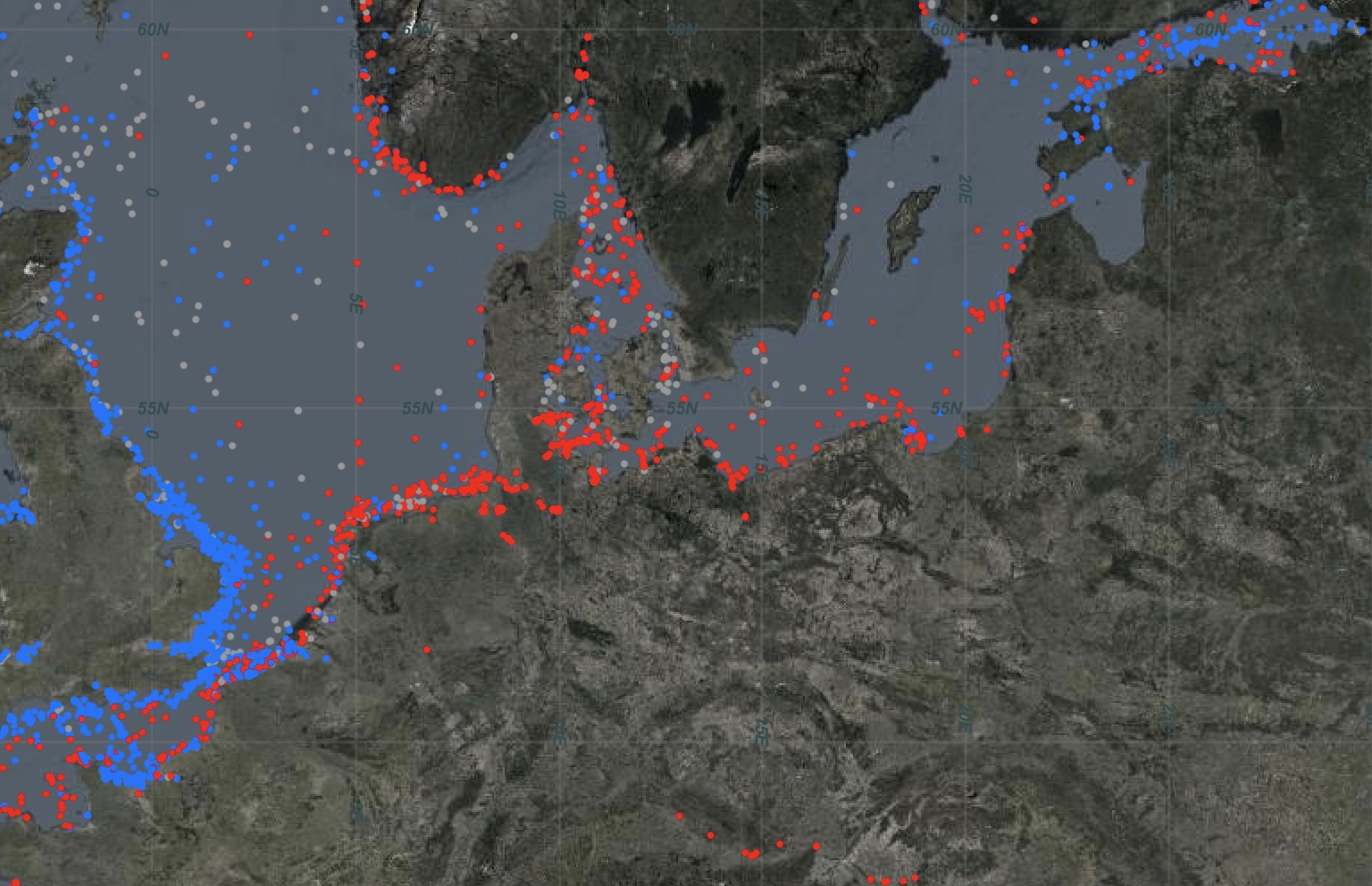
(via BoingBoing)